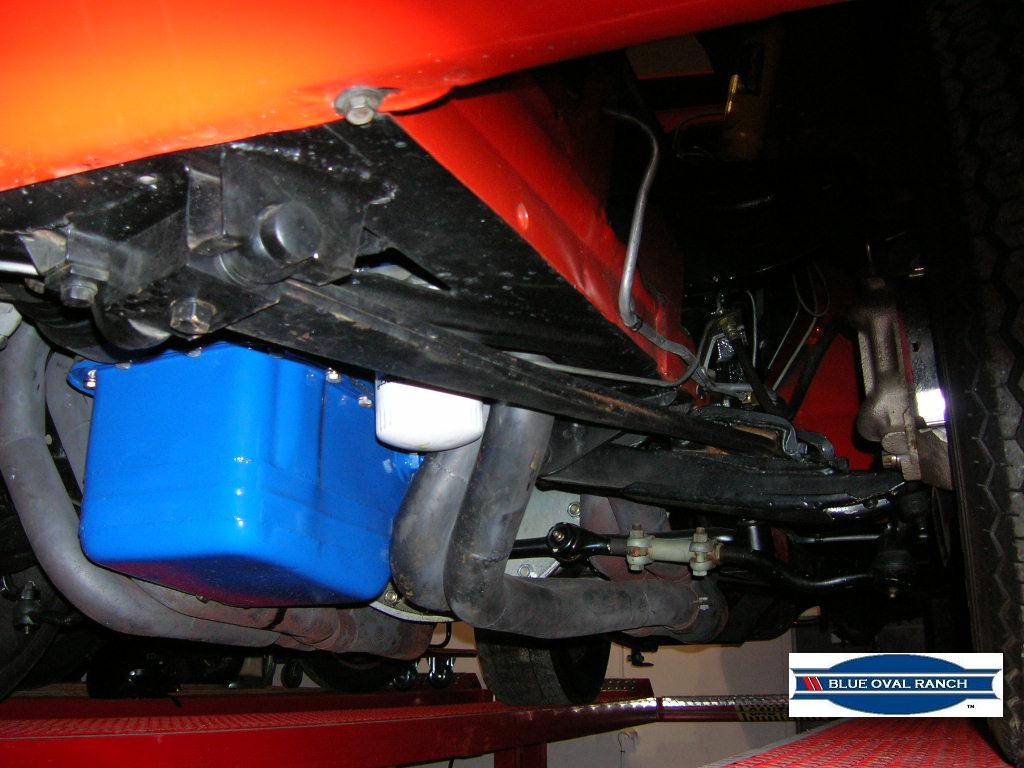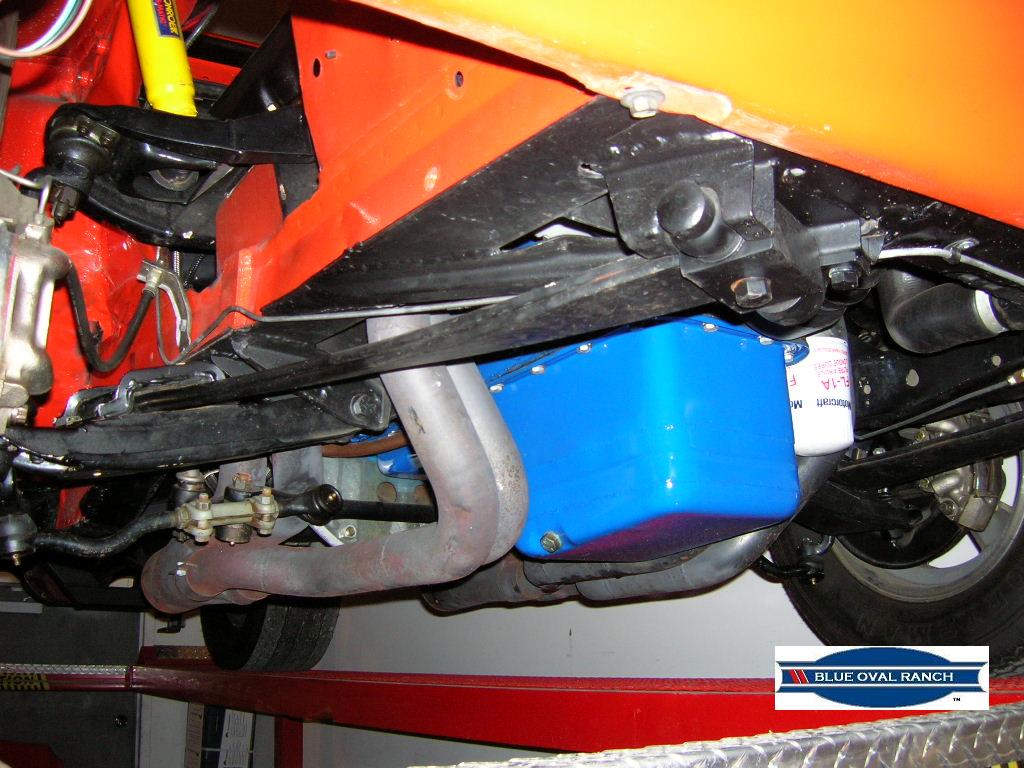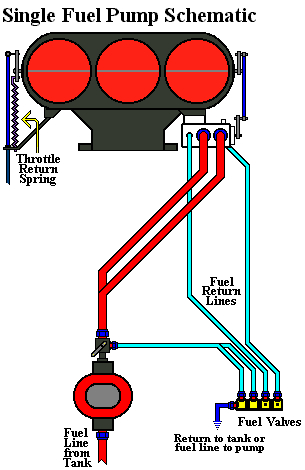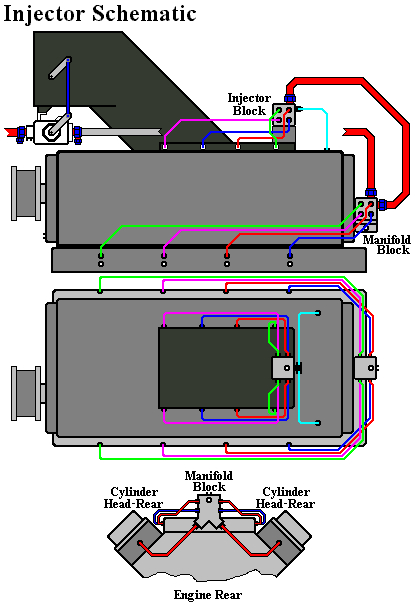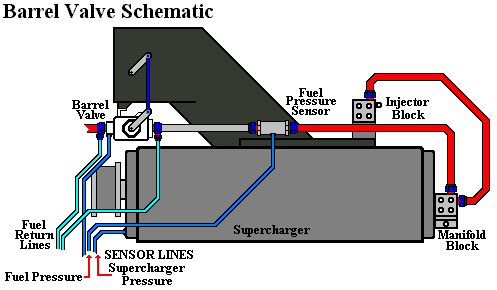-
Posts
4,608 -
Joined
-
Last visited
Content Type
Profiles
Forums
Events
Gallery
Everything posted by Force
-

Round 2 AMT Advertising Suggestions
Force replied to regular guy's topic in General Automotive Talk (Trucks and Cars)
I wonder where they got that statement from!??!! Ford Motor Company had engines with over 400 hp before 1964, the 406 Tri-Power introduced in 1962 was rated at 405 hp and the 427 introduced in 1963 was rated at 410 hp for the single 4bbl and 425 hp for the dual 4 bbl, those were available in both Ford and Mercury. -

Old field Kenworth
Force replied to KJ790's topic in WIP: Model Trucks: Big Rigs and Heavy Equipment
Nice work KJ. -
I puzzles me too. The Y-block came in 1954 and the kit you are doing is a 56 so going for a flathead when everybody wanted the newer OHV designs is for me a bit weird. I would rather have put in an early Cadillac or maybe an Oldsmobile OHV V8 wich was a common doing in many pre Y-block Fords, the Cadillac and Oldmobile OHV V8 engines came in 1949 and was instantly poplular with hot rodders so many Shoebox 49--51 Fords and Mercurys ended up with Cadillac engines and I even know of a 56 Ford Victoria wich was at C.W. Moss in Orange, CA. when I was there some years ago, that car was appearently oredered without an engine and tranny, and a Cadillac engine and tranny was put in after the car was delivered, all according to the story I was told by the owner of the shop. But of course a Ford in a Ford is allways better.
-

Moebius Models Under New Ownership
Force replied to martinfan5's topic in General Automotive Talk (Trucks and Cars)
I've also been to the Pegasus store at Moreno St up in Montclair CA, I try to go there every time I'm in the L.A. area and get me some kits and it's a neat place...but their website has a lot to desire. I hope this deal will be good for the hobby, but I'm a bit concerned as some things they have bought has more or less disappeared from the market, one example is the nice So-Real Concepts developed drag racing wheels, after Pegasus bought them out they were available for a while but now they are hard to find and I don't like that to happen with Moebius. -
Nice to see you work on some models again Rickard.
-

Slump buster attempt 2: revell 64 Ford thunderbolt.
Force replied to 426 pack's topic in WIP: Drag Racing Models
The coil springs and shocks are mounted above the upper control arms in these cars so to get the SOHC to fit in the Mustang's small engine bay they had to shave off the complete spring tower and did the leaf springs to the lower control arms instead, maybe not optimal but it worked for straight line racing. The Fairlane has similar engine bay and they had to cut off some of the spring towers and move the upper control arms outwards a bit to fit the 427 wedge engine in the engine bay on the Thunderbolt, and with the SOHC heads you have to remove the towers all together to make room for that engine...so this suspension setup is one option, another might be coil over shocks. -

are the carbs accurate for the '68 Rd. Runner Hemi?
Force replied to fiatboy's topic in WIP: Drag Racing Models
I agree, the Fireball carbs are the best and most accurate on the market, I think the masters are 3D printed. -

International Sightliner
Force replied to dragstueck's topic in Model Trucks: Big Rigs and Heavy Equipment
Just awsome!! -

Santa Fe International Harvester CO4000
Force replied to dragstueck's topic in Model Trucks: Big Rigs and Heavy Equipment
I couldn't agree more!! -
I don't care what body he has on his car, it's only a carbon fibre wedge shaped shell wich doesn't look like a car anyway, so I root for him regardless...it's only when he races John I have a hard time deciding on who I root for as both can't win. I saw an interview with John yesterday, he got knocked out in the crash but he seems to be just fine. They are also helping Jim Head / Jonnie Lindberg fix the damaged chassis at the JFR Brownsburg shop right now so Jonnie will have a car to race at Gainesville in a couple of weeks...John is allright as he has backup cars to use.
-
The only wrong way is maybe if you mount them upside down or tilted to one end ...otherwise, if you can get it to work somehow it's not wrong.
-
Sorry to hear, I loved his x-ray drawings.
-
I saw that yesterday, I hope both drivers are okey, Brittany was banged up but at least okey after the Pomona crash and was driving at this event and Courtney won this event. I'm from Sweden and I kind of root for Jonnie, but my favourite NHRA driver since the early 90's is John (as you might have figured out from my alias and avatar) so I don't know wich leg to stand on when they race each other.
-

Slump buster attempt 2: revell 64 Ford thunderbolt.
Force replied to 426 pack's topic in WIP: Drag Racing Models
Cool, You could use this front suspension setup instead of the coil springs as they did on the 1965 A/FX Mustangs with 427 SOHC were they also shaved off the spring towers. -

Alternative rocker covers for Hemi engine?
Force replied to JollySipper's topic in Model Building Questions and Answers
Only the 1964-65 A864 and A990 Race Hemi had chromed or plain steel valve covers from the factory, most...if not all, of the 1966-forward Street Hemi's put in cars had black wrinkle finish valve covers. The Race Hemi has different head castings with straight ends and the Street Hemi heads has one end curved to allow for the optional power steering pump to fit, so the Race Hemi valve covers will not seal properly on Street Hemi heads as the straight end Race Hemi valve cover leaves a hole where the Street Hemi head curves , but the bolt parttern is the same. The1967 RO23/WO23 and 1968 BO29/LO23 Race Hemi's were modified Street Hemi's and didn't have the same heads as the 64-5 Race Hemis, and I believe they were also delivered with black wrinkle finnish valve covers. The aftermarket supplied other variants of valve covers for the Street Hemi, smooth steel, chromed, aluminum, anodized, single or dual plugs. -
Yes you are absolutely right, I had saved an article about this car from 1982 in my files, and he for sure ran a Boss 429 based 500 in this car, I thought the 500 cui rule came later so I assumed he ran a Cleveland without checking the facts...my bad. He changed to the Thunderbird in 1983.
-
It would for sure be more interesting, as it is now they plan the strategies after the known yellow flag periods. The most interesting race I have seen so far since I started watching NASCAR in the 90's (we didn't have any NASCAR coverage on cable or other TV networks before that) was at Talladega back in May 1997, no cautions under the whole race so all pitstops was under green flag, it's the fastest NASCAR race to this day with an average speed for the whole race was over 188 mph...Mark Martin won.
-
I personally don't like the segment racing as they do it now. They wanted more exciting racing throughout the entire race but with these segments you get kind of a thrill for a couple of laps and then a looooong boring time of yellow flag everyone knows is coming and exactly when, after that green again and the last couple of laps gets interesting again before the next segment end and then another loooong boring yellow flag period until it gets green again to the end of the race. I don't know if I think the long yellow flag periods in the middle of the race is more exciting than when they didn't have segments. For me they can keep the segments but leave it green instead of the yellow flag everyone know is coming and let the race go on if nothing happens and it will be more unpredictable, and we don't have to see the long yellow flag periods those two times under the race as there are enough yellow flag periods in a race as it is without them. The drivers in the top ten at the end of each segment can get points as they do now to keep them on their toes.
-
I believe Glidden ran a 351 Cleveland based engine in the EXP, it was back when they had weight break rules in Pro Stock and the 500 cui rule came later. Here in Sweden we had a class back in the early 80's called Pro Street (nothing like Pro Street today) wich was pretty much like Pro Stock but with a little looser rules regarding body style and engines, and there was one Escort in that class. This class was replaced with NHRA spec Pro Stock with one year delay in the rules from the NHRA cars up to a year or so ago. Today the European Pro Stock cars have a longer time span for bodies and they haven't implemented the EFI rules yet so they still run carburetors and hood scoops over here.
-
Nice.
-

Mack Cruiseliner
Force replied to DRIPTROIT 71's topic in Model Trucks: Big Rigs and Heavy Equipment
Nice truck man. -
Great build!!
-
The fuel systems are quite complex on these cars and the main thing with a nitro engine is to get as much fuel as physically possible into the cylinders. The Swamp Rat XXX was raced in 1986 and the fuel systems has changed pretty much since the, but here is something to go by. The injector drawing is a bit too modern as it has ten injector lines on top of the blower, but there were four injector lines on each side under the injector hat and four lines on each side under the blower into the manifold runners at the time Garlits ran that car. The two red lines going into the back of the heads goes to injector nozzles right behind the intake valves where the main part of the fuel is delivered into the engine, but I don't know if Garlits used that back then, if not he might have used a system with eight lines per side under the blower instead of the four I mentioned before. But it doesn't matter that much, as long as it looks busy and kind of right you are on the right way.
-
Don't you think 9500+ rpm from a 358 cui pushrod V8 going flat out for four hours is enough!??!! The bad responce from the engines they use today on Super Speedways has to do with the restrictor plates. Personally I don't like the segments as they are today with a caution flag eveyone know will come for several laps between them, I think it's very boring and slows the race down for long periods of time, you can still have segments and segment winners but keep it green if nothing happens and it's not that predictable and more interesting.
-
I also put on the BMF after the clear so it doesn't get dulled with a clear coat over it, but as Trevor says, it's a personal choice. I haven't had any trouble with the BMF coming loose yet and I've used it for about 25 years now.

